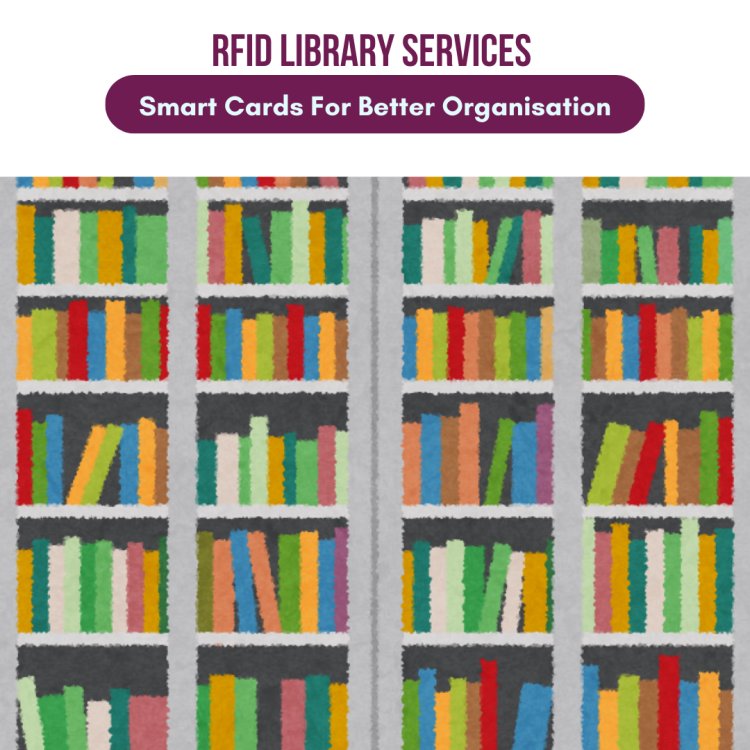RFID tags In Libraries - Beyond the Information Retrieval
Dive into the multifaceted significance of RFID tags in libraries beyond mere information storage and retrieval. Uncover the layers of innovation and efficiency that RFID tags bring to the forefront of modern library management, revolutionising operations and ushering in a new era of streamlined and user-centric experiences.
Share this Post to earn Money ( Upto ₹100 per 1000 Views )

Dive into the multifaceted significance of RFID tags in libraries beyond mere information storage and retrieval. Uncover the layers of innovation and efficiency that RFID tags bring to the forefront of modern library management, revolutionising operations and ushering in a new era of streamlined and user-centric experiences.
In the ever-evolving landscape of library management, RFID systems have emerged as indispensable tools, with RFID tags standing at the forefront of this transformative technology. The significance of RFID tags extends far beyond the conventional role of storing and retrieving information. These tags play a pivotal role in offering the seamless and efficient execution of day-to-day management activities within library premises, ushering in a new era of streamlined operations.
While it is a crucial note that the importance of RFID chips lies solely in the information stored within the tags, the reality is that their impact stretches beyond data storage and retrieval. RFID tags act as dynamic catalysts, redefining how libraries function and enhancing the overall user experience.
In this exploration, we delve deeper into the multifaceted significance of RFID tags in libraries, uncovering the layers of innovation and efficiency they bring to the forefront of modern library management.
Staff Organisation
RFID technology has revolutionized library management, extending its utility beyond traditional data storage and retrieval. Among its extensive applications, issuing access cards for entry into library premises stands out as one of the most common and impactful uses of RFID in libraries. Through access control systems integrated with RFID technology, libraries meticulously record crucial data such as the entry and exit points of patrons and staff, frequency of visits, and peak timings of visits.
This wealth of information empowers library management to optimize staff deployment, streamline operations, and enhance overall efficiency. By harnessing RFID technology for access control, libraries not only ensure a secure environment but also leverage data-driven insights to deliver exceptional service and improve user experience.
Improving the Library Standards
In the realm of library management, the strategic upgrade of collections and technology aligns with the paramount goal of retaining subscription rates and enhancing user satisfaction.
RFID tags play a pivotal role in achieving this objective by facilitating the monitoring of collective user actions. From resource searches and inquiries to transaction checkouts and access control gate interactions, every user activity is meticulously tracked and updated in individual patron accounts through the information stored in RFID tags embedded within key/access cards.
This comprehensive data enables libraries to tailor their collections and technological offerings according to user preferences and needs. The synergy between RFID technology and user behavior tracking emerges as a powerful tool, not only for enhancing the library's responsiveness but also for ensuring a dynamic and user-centric library experience.
Security Enhancement
Addressing security challenges is a paramount concern in RFID Library Systems, and RFID tags emerge as instrumental assets in fortifying library security.
During inventory audits, the information stored in RFID tags facilitates the identification of hidden items, ensuring a thorough examination of the library's holdings. Moreover, these tags play a crucial role in restricting unrecorded checkouts, providing a solid mechanism to monitor and control the movement of resources in real-time.
This capability empowers library staff to proactively prevent the loss of valuable information resources, enhancing the overall security infrastructure of the library. The integration of RFID technology not only elevates the efficiency of inventory management but also serves as a vigilant guardian, safeguarding the library's intellectual assets from potential security threats
On time Renewals and Calculated Book Returns
RFID tags extend their influence beyond traditional information retrieval, notably in the domain of self-service kiosks. These kiosks redefine the user experience by not only enabling patrons to perform book checkouts independently but also by seamlessly verifying subscription expiry through the data embedded in patrons' library cards. This innovative integration ensures that users can promptly renew their subscriptions, fostering a continuous and uninterrupted access to library services.
Moreover, the dual RFID readers play a pivotal role in enhancing efficiency during book returns. By extracting information from returned books, these readers verify due dates and, in the case of over dues, intelligently cancel the return process. This dual functionality not only streamlines library operations but also contributes to a more user-centric and service-oriented library experience.
Conclusion:
In the dynamic landscape of library management, RFID tags emerge as transformative assets, surpassing their conventional role in information storage and retrieval. Their impact extends far beyond, reshaping staff organisation through access control systems and optimising operations. RFID tags empower libraries to elevate standards by tracking user behaviour, tailoring collections to preferences, and ensuring a dynamic, user-centric experience. Addressing security challenges, these tags fortify library security during inventory audits, preventing the loss of valuable resources. Moreover, RFID tags streamline self-service kiosks, enabling on-time renewals and calculated book returns, contributing to a seamless and uninterrupted library experience. As libraries evolve, RFID technology stands as a dynamic catalyst, redefining efficiency and innovation in modern library management.














